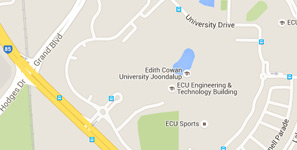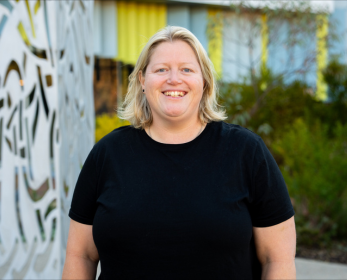Paula is an Associate Professor within the Nutrition & Health Innovation Research Institute at Edith Cowan University. She is a former Healthway Research Fellow and co-director of the Australian Urban Design Research Centre at the University of Western Australia.
Her research studies the impact of built and natural environments and urban planning policies on physical, social and mental health and wellbeing outcomes. She is highly skilled in spatial analytics and the use of geographic information systems and the development of measurement methods of urban design features and public open space.
More recently, Paula’s work has been focused on developing the Map My Say public participatory mapping tool for community consultation that crowdsources information directly from community members and unlocks the intelligence and knowledge embedded within local communities.
Currently, she leads The Australian Park Life Project, which has created a nationally standardised spatial database for public open spaces, established a nationally harmonised framework for classifying their functions and hierarchies, and conducted the inaugural Australian Park Life Survey capturing community utilisation of parks and public open spaces across Australia and explore the physical, social and mental health and wellbeing benefits associated with their use.
She is also co-leading an NHMRC Ideas Grant Pioneering a national 'Food Atlas' to map, measure and monitor food access across Australia and an ARC Discovery Project Creating evidence-based public open space standards for apartment residents.
Background
Paula has published 90+ peer reviewed publications and 5 book chapters and has secured research funds totalling in excess of $9.5M – this includes $6.5M in Australian Competitive Grant Research Income (HERDC category 1) and $2.9M from Other Public Sector and Industry Research Funding(HERDC categories 2 and 3).
Prior to joining ECU Paula was the Co-Director of the Australian Urban Design Research Centre (AUDRC), School of Design, The University of Western Australia where she established two three-year research collaboration agreements with the Western Australian Planning
Commission, DevelopmentWA and WA Department of Communities to fund my research centre over six years and secured a Linkage Project (LP190100558) to develop a participatory mapping survey called "Map My Say" (https://www.mapmysay.com/) that has subsequently formed the basis of substantial data collections and research projects.
Other career highlights include:
- 2023: Deputy Head of Research, UWA School of Design.
- 2023: Editorial Board Member, Health & Place.
- 2023: Invited member - Western Australian Planning Commission / Department of Planning Lands and Heritage - Neighbourhood Design Advisory Group (NDAG).
- 2022: Inaugural 'Future Leaders Representative' on the Australian Urban Research Infrastructure Network (AURIN) Management Board.
- 2022: Scientific Advisory Committee member – Australian Urban Research Infrastructure Network (AURIN)
- 2021: Member of the UWA School of Design Executive Strategic Planning Committee and Research Sub-committee.
- 2019: Expert co-author of The Heart Foundation's Blue Print for an Active Australia (3rd Edition).
- 2017: Academic team developing helping develop the Heart Foundations' Healthy Active By Design (HABD) toolkit
- 2016: Liveable Neighbourhoods Review Special Technical Advisory Committee, Department of Planning.
- 2012: Contributor to the international consortium of experts on the Nike "Design To Move: A Physical Activity Action Agenda".
Professional Associations
- Member - Parks and Leisure Australia
Awards and Recognition
National and International Awards
- 2023: Planning Institute of Australia (PIA) WA Awards for Planning Excellence 2023. Planning Research Award - 'The HIGH LIFE Study: The policy and practice of designing healthy equitable apartments'. Foster, S., Hooper, P., Kleeman, A., Bolleter, J., Maitland, C.
- 2022: Planning Institute of Australia (PIA) WA Awards for Planning Excellence 2022. Planning Research Award - Plan My Australia. Bolleter, J., Hooper, P., Edwards, E., Cameron, R., Freestone, R.
- 2021: Planning Institute of Australia (PIA) WA Awards for Planning Excellence 2021. Planning Research Award - A suitability analysis for planning future Australia. Bolleter, J., Hooper, P., Edwards, E., Cameron, R., Freestone, R.
- 2019: Planning Institute of Australia (PIA) WA Awards for Planning Excellence 2019. Commendation: Improving Planning Processes & Practices - The Urban Health Check planning support system. Hooper, P.
- 2018: Planning Institute of Australia (PIA) VIC Awards for Planning Excellence 2018. Cutting Edge Research & Teaching - Creating Liveable Cities In Australia report - a unique Urban research and analytical Tool that provides for the first Time a comprehensive baseline Measure for urban liveability for All eight Australian states and Territories. Healthy Liveable Cities Group (RMIT) and Hooper, P.
- 2016: Research Innovation Award - International Society for Physical Activity and Health (ISPAH). Hooper, P.
- 2017: New York Center for Active Design: Research Excellence Award – Evaluation of the Liveable Neighbourhoods Guidelines. Hooper P., Foster, S., Trapp, G. & Giles-Corti B.
- 2013: Planning Institute of Australia (PIA) WA Awards for Planning Excellence 2013. Cutting Edge Research & Teaching - Evaluation of the Liveable Neighbourhoods policy. Hooper P.
University and National Teaching Awards
- School of Design Mid-Career Research Award, The University of Western Australia 2022. Hooper, P.
National and International Research Positions
- Co-Director, Australian Urban Design Research Centre (AUDRC), School of Design, The University of Western Australia
- Senior Research Fellow, Australian Urban Design Research Centre (AUDRC), School of Design, The University of Western Australia
- Healthway Research Fellow. The Australian Urban Design Research Centre, School of Design,, The University of Western Australia
- Post-doctoral Research Fellow: NHMRC Centre for Research Excellence in Healthy, Liveable and Equitable Communities. The Centre for the Built Environment and Health, UWA School of Agriculture and Environmental Sciences and the School of Human Sciences, The University of Western Australia
- Postdoctoral Research Fellow / Project coordinator - RESIDential Environments (RESIDE-II) Research into Practice. The Centre for the Built Environment and Health, School of Population Health, The University of Western Australia
- Research Associate: National Evaluation Team – Well@Work: Promoting Active and Healthy Workplaces national pilot. The British Heart Foundation National Centre for Physical Activity and Health, School of Sport and Exercise Sciences, Loughborough University
Research Areas and Interest
- Impact of the built environment on health
- Public open space
- Food environments
- Public participatory mapping
Research Student Supervisions - current
Associate Supervisor:
- PhD: Anna Gannett. TREK2School: Creating an evidence base to inform targeted interventions to increase active school transport in primary and secondary school students in Perth. The University of Western Australia
- PhD: Shinjita Das. Development of a green view index for apartment buildings. RMIT.
- PhD: Maassoumeh Barghchi. Developing Climate-Sensitive Design Guidelines for Public Open Space. The University of Western Australia.

